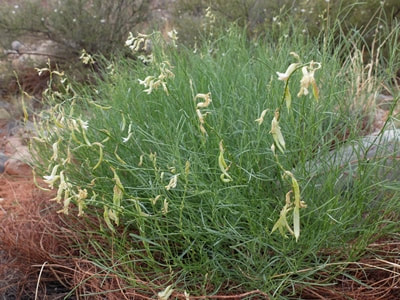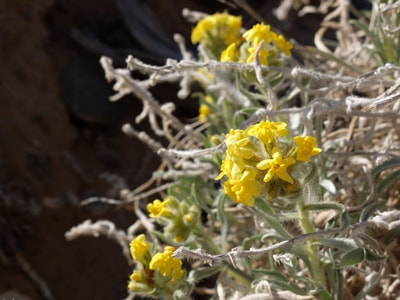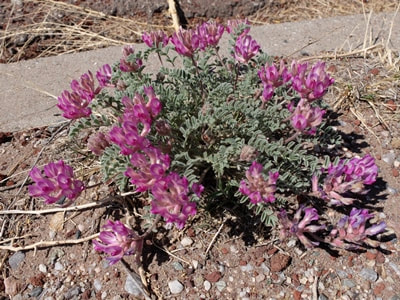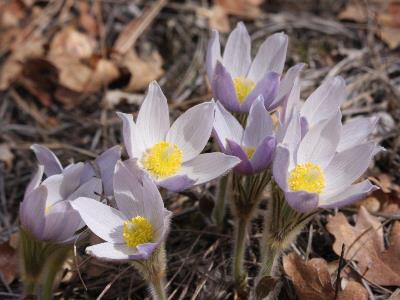|
Found in dry openings in piñon-juniper forests and open canyons
Seen blooming in April in Red Wash Canyon Another Milkvetch but quite different in appearance from the Missouri Milkvetch of a couple of weeks ago. Rushy Milkvetch grows like a bush to 2 feet wide and high with bright green stems and long, narrow leaves. Flowers are white and about an inch long and grow loosely clustered along the stem producing many spear-shaped 1" long seed pods. Both Missouri Milkvetch and Rushy Milkvetch contain swainsonine which is toxic to livestock and causes a wide variety of toxicological problems, including neurological, cardiovascular, and reproductive effects. For this reason, they should be more correctly called Locoweeds. “Loco” in Spanish means “crazy” and alludes to the often disoriented behavior of animals afflicted by these plants. Traditionally, the Navajo used it to induce vomiting and a poultice of the plant was applied to a goiter. Source. If you trying to identify a different flower then you can check what other flower bloom this month. If you cannot identify a flower from the website send a photo and where you took it to [email protected]. Read online for tips.
0 Comments
Found in dry, sandy areas in piñon-juniper woodlands
Seen blooming in April in Arroyo de los Pinavetes, Santa Fe NF, Medanales When most of the vegetation looks dead, even after some rain, it is a welcome sight to see bright yellow flowers and fresh, green leaves growing out of a clump of old, gray stems. Brenda’s Yellow Cryptantha grows to about 10 inches high in clumps, covered in bristly hairs. Leaves are grey-green and narrow growing out of the dried stems and leaves from previous years. Flowers grow in clusters and are tubular with five petals. I was unable to find out who Brenda was to give her name to a flower, or why it is also called a Miner’s Candle. Traditionally, the Hopi used it to treat cancer and growth in the throat and the Navajo used it as a dusting powder for sore eyes, for postpartum purification, and relief of intestinal inflammation. Source. If you trying to identify a different flower then you can check what other flowers bloom this month. If you cannot identify a flower from the website send a photo and where you took it to [email protected]. Read online for tips. Found in dry openings in pinyon-juniper and sagebrush, and roadsides
Seen blooming in April at the intersection of 68 and 56 in Ohkay Owingeh There are many species of Milkvetch that grow in our area. The Missouri Milkvetch is so named because it was first collected nearby the Missouri River in 1811. It grows low and sprawling to 5 inches high, covered in dense, white hairs which give the plant a silvery-green appearance. Leaves are divided into 11 to 21 oval leaflets which arch or lay on the ground. Flowers are pink-purple with a white splash in the center, up to 1 inch long, and grow in a cluster at the top of the flower stalk. The flowers turn blue with age. Seedpods are 1 inch long, slightly hairy and slightly curved. Medicinal uses of this specific Milkvetch are unknown. Astragalus root is used to make medicine for hay fever, diabetes, kidney disease, and many other conditions, but some species contain a nerve toxin and have been linked to livestock poisonings. Source. If you trying to identify a different flower then you can check what other flower bloom this month. If you cannot identify a flower from the website send a photo and where you took it to [email protected]. Read online for tips. Found in sparse pine forests and on dry slopes
Seen blooming in April on Salazar Trail #14 in the Carson NF Photo credit: Uwe Schroeter Pasqueflower is one of the first flowers to appear when the snow begins to melt, often in masses. The pale purple, bell-shaped flowers bloom before the finely cut leaves develop and the plant gets taller. The plant is covered in long, silky hairs. The seed head is a feathery plume. The fresh plant is toxic and very irritating and shouldn’t be touched. Native Americans used small amounts of the dried plant for various ailments and conditions: to kill fleas and lice, to staunch nosebleeds, for rheumatism, to alleviate headaches, and to combat lung disorders. Source. Modern day homeopaths use it to treat painful conditions of the male or female reproductive system, skin conditions, and many other conditions, but there is no good scientific evidence to support its use, so it is not recommended. Source. If you trying to identify a different flower then you can check what other flower bloom this month. If you cannot identify a flower from the website send a photo and where you took it to [email protected]. Read online for tips. Found in dry, sandy, gravelly areas
Seen blooming in March and April in Plaza Blanca and Red Wash Canyon Flowers in the Parsley family bloom early and have tiny flowers with five petals in usually flat heads. This family is also commonly called Celery or Carrot. The New Mexico False Carrot grows to 8" high in a dense bright green tuft with dry stalks from the previous year. Leaves are divided into narrow segments. It is listed as a New Mexico Rare Plant but it is not difficult to find in Plaza Blanca and Red Wash Canyons. Source. If you trying to identify a different flower then you can check what other flower bloom this month. If you cannot identify a flower from the website send a photo and where you took it to [email protected]. Read online for tips. |
AuthorI am Marilyn Phillips, a native of England, whose love of nature and the outdoors from childhood brought me by a circuitous route to Crested Butte, Colorado in 1993 and 16 years later to northern New Mexico. My exploration of the many trails in these areas, my interest in wildflowers and photography, and career in computer system design came together in this creation. If you have any corrections, comments or questions, please contact me by email. Archives
September 2025
Categoriescopyright © 2020
|







 RSS Feed
RSS Feed